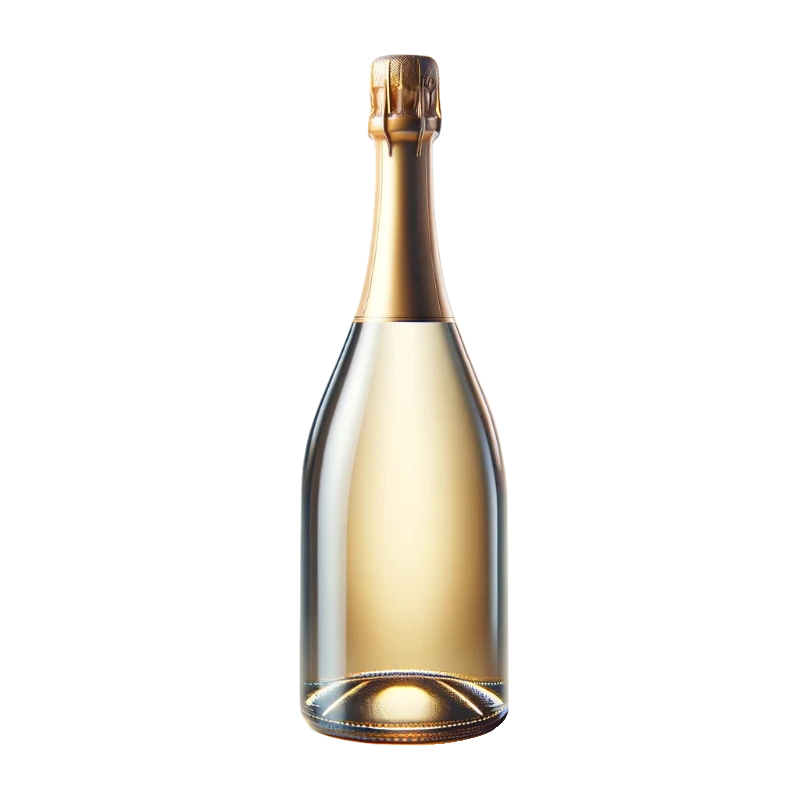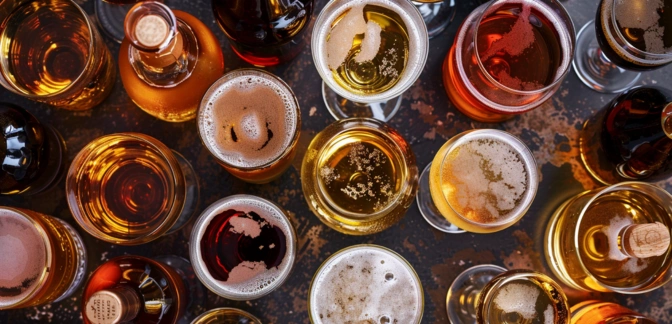Champagne — Nutrients, Health Benefits, And Shopping Tips

Written by Listonic Team
Last update on September 4, 2024
Nutrients
Nutrition facts
Amount per 100 g
Calories
🔥 76 kcal
| Nutrition per: 100 g | Value | % Daily Value* |
|---|---|---|
| Carbs | 2 g | 0.73% |
| Fiber | 0 g | - |
| Sugars | 1 g | 2% |
| Glycemic Index | 50 | - |
| Protein | 0 g | - |
| Sodium | 7 mg | 0.3% |
| Total Fat | 0 g | - |
*The % of Daily Value (DV) tells you how much a nutrient in a serving of food contributes to a daily diet. 2,000 calories a day is used for general nutrition advice.
50
🟢 Low Glycemic Index
Key takeaways
Health risks
- High alcohol content which can lead to addiction, liver damage, and other health problems if consumed in excess.
- High calorie content which can contribute to weight gain if consumed frequently, particularly when paired with sugary mixers.
- Potential for increased acid reflux as champagne is carbonated and acidic, which can exacerbate symptoms in individuals with acid reflux or GERD.
- Risk of dehydration as alcohol is a diuretic, which can lead to increased urination and potential dehydration if not balanced with adequate water intake.
How to choose champagne
Choose champagne that has a steady stream of tiny bubbles when poured. The color should be pale with a hint of gold. The aroma should be complex, with notes of citrus, almond, and apple, depending on the variety.
Steer clear of champagne with large bubbles or a flat aroma, which can indicate it has either been improperly stored or is of lower quality. Good champagne should taste crisp and leave a refreshing acidity on the palate.

How to store champagne
A wine fridge or cellar with consistent temperature is perfect for storing champagne. Keep the bottles lying on their sides to keep the cork moist. Properly stored champagne can last for several years.
Frequent temperature changes can spoil champagne, causing it to lose its effervescence. Avoid upright storage, which can dry out the cork. Keep it away from light and vibration to preserve its delicate bubbles and flavor.
✅ Please keep in mind: There is no safe amount of alcohol
Even moderate alcohol consumption poses significant health risks. The most recent data from the World Health Organization warns that no level of alcohol consumption is safe for our health. Click to learn more.
How long does it last?
Champagne can last for 3-4 years for non-vintage and up to 20 years for vintage when stored in a cool, dark place. Once opened, it should be consumed within 3-5 days and kept refrigerated with a champagne stopper to maintain its carbonation.
What to do with leftovers?
Leftover champagne can be used in a variety of ways, both in cooking and cocktails. Use it to make a champagne vinaigrette by mixing it with olive oil, mustard, and honey for a light and tangy dressing. Champagne can also be used in desserts, such as champagne sorbet or jelly.
Use champagne in cocktails like mimosas, bellinis, or a French 75, where it adds a sparkling touch. It can also be reduced and used in a butter sauce for seafood, adding a rich, delicate flavor. If you have a lot of champagne, consider freezing it in ice cube trays and using the cubes to chill future cocktails or punch without watering them down. Champagne can also be incorporated into cakes or cupcakes for a light, fluffy texture. For a unique twist, use champagne in a savory dish like a risotto or as a base for a poaching liquid for fruit or seafood.
👨⚕️️ Medical disclaimer
Discover products from other categories
Listonic Team
Fact-checked
Our editorial team checked this article to make sure it was accurate at the time of publishing it.
Get the top-rated shopping list app on your phone!







